To Bee or not to Bee!
Group visit to Bristol Botanic Gardens in August for their annual Bee & Pollination festival
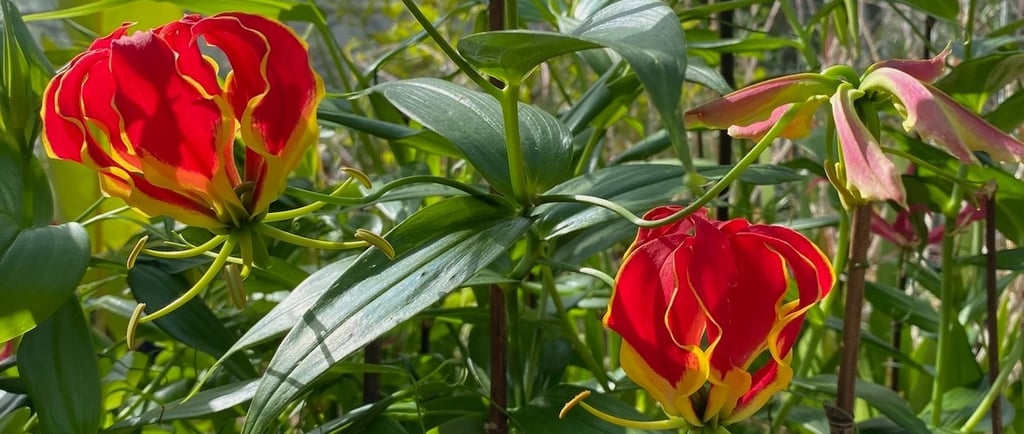

To Bee or Not To Bee?
On the 24th August, 13 of our members enjoyed an afternoon at Bristol Botanic Gardens during their annual Bee and Pollination Festival. We started with an hour to wander round the “Bee” exhibitors and demonstrations, before starting our tour of the Gardens.
Our guide for the afternoon was the very knowledgeable Josie, who took us through the history of the site. The Gardens in Stoke Bishop have been designed to tell stories about plant evolution, and is home to 4 core plant collections, namely Evolution, Mediterranean Climate, Local Flora and Useful Plants. They are planted in displays that convey the drama of plants in the wild and aspects of their evolutionary biology. Those plants that cannot cope with our climate are housed in glasshouses.
The first plant collection covers evolution and pollination, from beetles, flies and bees to birds and mammals (including rodents and bats). To assist in our discovery, there were wicker models of the creatures too! Some of the plants have to be hand-pollinated where we do not have the appropriate creature to hand, eg the bananas (no fruit bats here). Primitive plants, fertilised by water or wind, are featured in the Evolutionary Dell from Liverworts to Conifers. A friendly dinosaur overlooked us as we walked through this area.
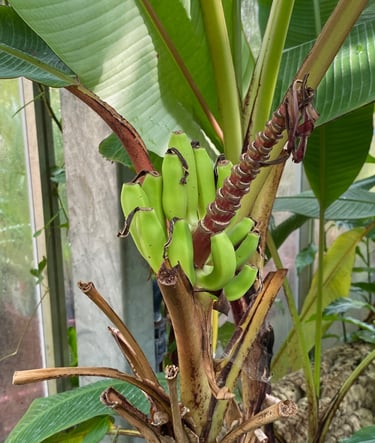

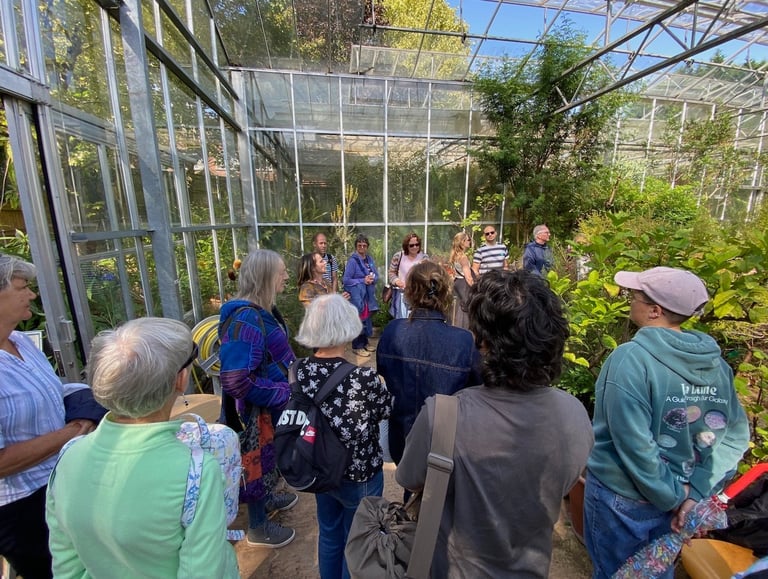

The second section showed Mediterranean Climate regions from South America and Australia to South Africa and the European Mediterranean. They all share the same temperature, seasonality and rainfall (although nowadays these guidelines are not that reliable!). Even though the plants are thousands of miles from each other, they have similar adaptations (known as “convergent evolution”) with their long, hot, dry summers. Evergreen forests, rocky landscapes, fynbos and chaparral are among the diverse areas here.
The third collection covers local flora and rare native plants, and comprises a series of mini West Country habitats eg the Avon Gorge Whitebeams and other threatened flora. The local limestone cliffs, rare scrubland and grassland of Devon, Cornwall, the Bristol Channel and South Wales are covered as well as more local areas. Aquatic plants are there too, from local ditches, rhynes and rivers.
The final plant collection is of “Useful Plants” with food and medicine displays. The Western Herb Garden reflects the origins of traditional herbal medicine, showing plants that are used to treat specific parts of the body, eg lungs, heart and intestines. The Chinese Herb Garden grows 180 species and aims to provide a comprehensive collection of plants used in traditional Chinese herbal medicine. As well as these two main sections, plants connected with Ayurvedic (Indian) and South African medicine are included, as is food and spice plants, and seasonal displays of vegetables. Some of these plants are in the glasshouses (spices, cocoa, coffee, vanilla) while others are hardy (tea, Native American, grapes and cereals).
When we had finished our tour, we were free to wander around the nurseries which were selling bee-friendly plants, or stop at the cafe for a well-deserved tea or coffee, marvelling at how once again we had avoided bad weather! Our thanks go to our chairman Dave Sage, who drove the minibus and brought us safely back to Keynsham.
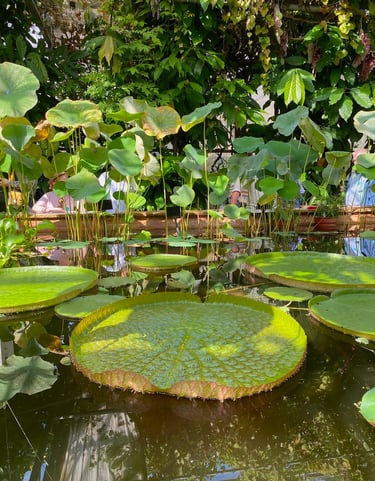

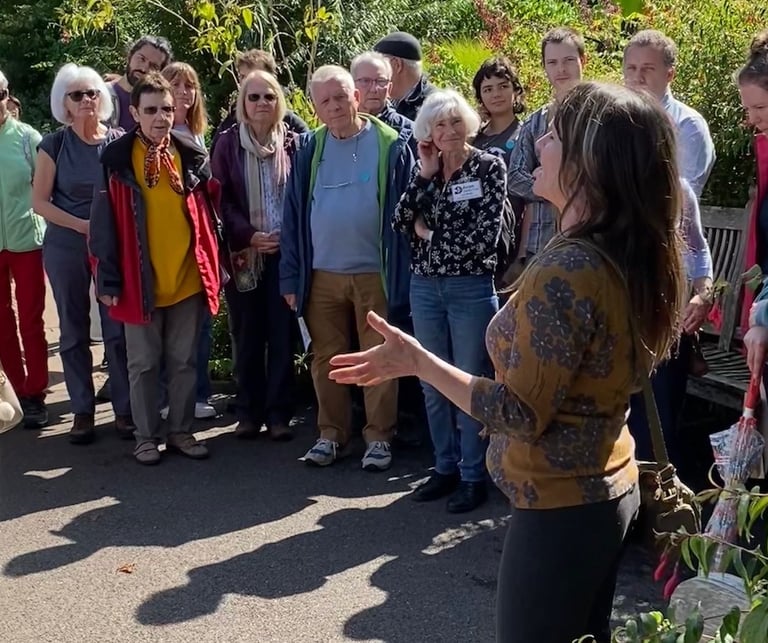

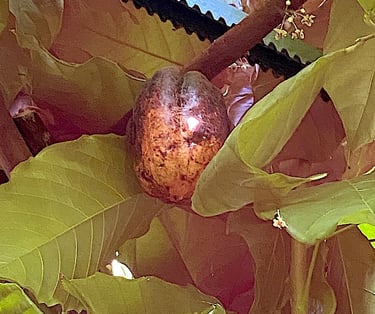

Banana tree
Cocoa pod
Group in one of the glasshouses
Amazonian waterlilies and Lotus
Josie talking to the group
Hibiscus flowers
